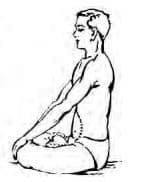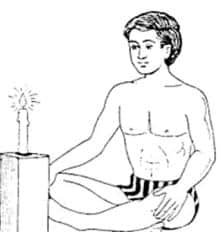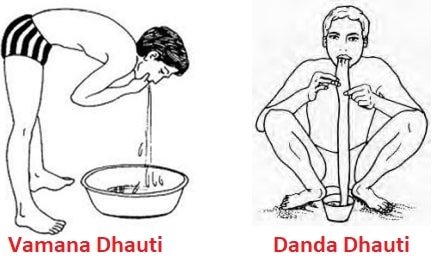Teachers and Examiners (CBSESkillEduction) collaborated to create the Physical Education Class 11 Chapter 3 Notes. All the important Information are taken from the NCERT Textbook Physical Education (048) class 11.
Meaning and importance of Yoga
The word “yoga” comes from the Sanskrit word “yuj”, which means “union”. According to the Hindu scriptures, yoga represents the connection between the soul and spirit. Doing yoga can help with muscle tone, lower blood pressure, stress relief, and physical and mental health.
The benefits of yoga include
- Helps the mind and body stay healthy
- Support natural healing process
- Yoga helps to flushes toxins from the body
- Boosts confidencce and inner strength
- Beneficial for children in learning and development process
- Helps individuals to understand themselves better
Introduction to Astanga Yoga
Yoga is not just a physical exercise but a way of life; it is a philosophical and spiritual path that helps individuals to connect with themselves. Yoga consists of different principles which guide personal growth, mindfulness and well-being.
Yamas (Social Discipline)
Yamas have five universal practices that help us to move forward in our personal and spiritual development. It teaches us how to interact with the world.
- Ahimsa (Non-violence) – Being kind to others, animals, and ourselves.
- Satya (Truthfulness) – Living with honesty and integrity.
- Asteya (Non-stealing) – Appreciating what we have.
- Brahmacharya (Wise energy use) – Using energy responsibly.
- Aparigraha (Non-possessiveness) – Letting go of attachments and material desires.
Niyamas (Self-discipline)
Niyamas Yoga deals with how we interact with ourselves and our internal world. Niyamas help the individual regulate her/his behaviour and maintain a positive environment in which to grow.
- Saucha (Purity) – Keeping the body and mind clean.
- Santosha (Contentment) – Finding happiness in what we have.
- Tapa (Austerity) – Building strength through challenges.
- Swadhyaya (Self-study) – Learning and understanding oneself.
- Ishwar Pranidhan (Surrender to the Divine) – Accepting life with gratitude and devotion.
Yogic Kriyas (Shat Karma)
According to the Tridosha Theory, the human body consists of three important energies: Vata, Pitta and Kapha. Vata helps to control the movement of the body, Pitta helps to improve digestion and metabolism, and Kapha maintains the body structure. If any person having an imbalance of these energies can have health issues, Shat Kriyas in yoga have six techniques which help to purify the whole body and get good health.
a. Kapalabhati
Kapalabhati is an important part of Shat karma, sometimes known as Shatkriya. The word ‘kapalabhati’ comes from the Sanskrit word ‘kapal’, which means ‘skull’, and ‘bhati’, which means ‘shining’. It helps to positively influence the brain, according to the Gherand Samhita. It helps for mental health and lung purification and helps to improve breathing efficiency.

b. Trataka
Trataka is a meditation technique that helps to improve mental focus and visual clarity. In this meditation technique, you look at a small object like a candle flame or black dot without blinking your eyes. It helps to improve concentration, focus, vision, etc.

c. Neti
Neti helps to clean the nasal passages and improves breathing by removing impurities. There are two types of Neti:
- Jala Neta (Water Cleansing): Jala Neta cleans the nasal passages using salted water and a neti pot. It is also known as nasal irrigation.
- Sutra Neti (Thread Cleansing): In this technique, the waxed cotton thread is used; waxed cotton thread is inserted from the nose and pulled out from the mouth. Moving the tread back and forth cleans the nasal passages deeply.

d. Dhauti
Dhauti is an important part of the Shatkarma; it helps to clean the stomach and digestive system. It helps to remove toxins inside the body, stomach acids, etc. It is helpful in ulcers, hernias, heart disease and hypertension.
- Vamana Dhauti: In Sanskrit, “Vamana” means “middle”, and “Dhauti” means “purification”. Using this yogic cleansing technique, you can clean your upper digestive and respiratory systems.
- DandaDhauti: One of the cleansing techniques (shatkarmas), used to clean the oesophagus with a “stick” or danda. This kriya helps to clean the windpipe, oesophagus and stomach by inserting a rubber tube into the throat all the way down to the stomach.

e. Nauli
Nauliis one of the Kriyas or Shatkarmafrom Yoga. The exercise is claimed to serve the cleaning of the abdominal region – digestive organs, small intestine and is based on a massage of the internal belly organs by a circular movement of the abdominal muscles.

f. Basti
Basti is an important part of Shatkarma (sometimes known as Shatkriya), the yogic system of body cleansing techniques. It is intended mainly to clean the lower abdomen, especially the colon.
Pranayama and its types
Pranayama is an important part of yoga. Pranayama focuses on breathing techniques; it helps to improve mental health, the nervous system and overall well-being of the body.
Important Types of Pranayama:
- Suryabhedana – Energising breath.
- Ujjayi – Ocean breath for focus and relaxation.
- Sheetkari & Sheetali – Cooling breath techniques.
- Bhramari – Humming breath for calmness.
- Bhastrika – Powerful breathing for energy.
- Moorcha & Palvani – Advanced breath control techniques.
- Nadishodhan – Cleansing breath for balance.
Active Lifestyle and stress management through Yoga
Diabetes cases, health issues and mental health issues have increased in India over the past decade, making India the second highest country affected by diabetes cases. These diabetes cases increase due to the changing lifestyles and due to eating habits. Yoga is a powerful tool for maintaining an active lifestyle and managing stress effectively. Yoga techniques are beneficial for physical movement, breathing techniques and mindfulness, etc.

It is essential to adopt healthy lifestyle habits to stay fit and healthy.
- Taking a balanced diet
- Participating in regular physical exercise
- Taking adequate rest
- Avoiding use of tobacco and alcohol
- Fighting obesity
- Overcoming stress
- Making healthy friendships
- Maintaining a pollution-free environment
- Adopting adequate safety measures
Stress management through Yoga
Yoga is a powerful tool for reducing stress. It is a combination of breathing techniques, physical posture and meditation to calm the mind and body.
How Yoga Helps with Stress:
- Breathing exercises (pranayama) regulate the nervous system and lower stress hormones.
- Yoga poses (asanas) release tension, improve flexibility, and boost relaxation.
- Meditation & mindfulness enhance focus, reduce anxiety, and promote emotional balance.
Physical Education Class 11 Chapter 3 Notes
Physical Education Class 11 Notes
- Physical Education Class 11 Chapter 1 Notes
- Physical Education Class 11 Chapter 2 Notes
- Physical Education Class 11 Chapter 3 Notes
- Physical Education Class 11 Chapter 4 Notes
- Physical Education Class 11 Chapter 5 Notes
- Physical Education Class 11 Chapter 6 Notes
- Physical Education Class 11 Chapter 7 Notes
- Physical Education Class 11 Chapter 8 Notes
- Physical Education Class 11 Chapter 9 Notes
- Training and Doping in Sports Class 11 Notes
Physical Education Class 11 Questions and Answers
- Physical Education Class 11 Chapter 1 Question Answers
- Physical Education Class 11 Chapter 2 Question Answers
- Physical Education Class 11 Chapter 3 Question Answers
- Physical Education Class 11 Chapter 4 Question Answers
- Physical Education Class 11 Chapter 5 Question Answers
- Physical Education Class 11 Chapter 6 Question Answers
- Physical Education Class 11 Chapter 7 Question Answers
- Physical Education Class 11 Chapter 8 Question Answers
- Physical Education Class 11 Chapter 9 Question Answers
- Training and Doping in Sports Class 11 Questions and Answers
